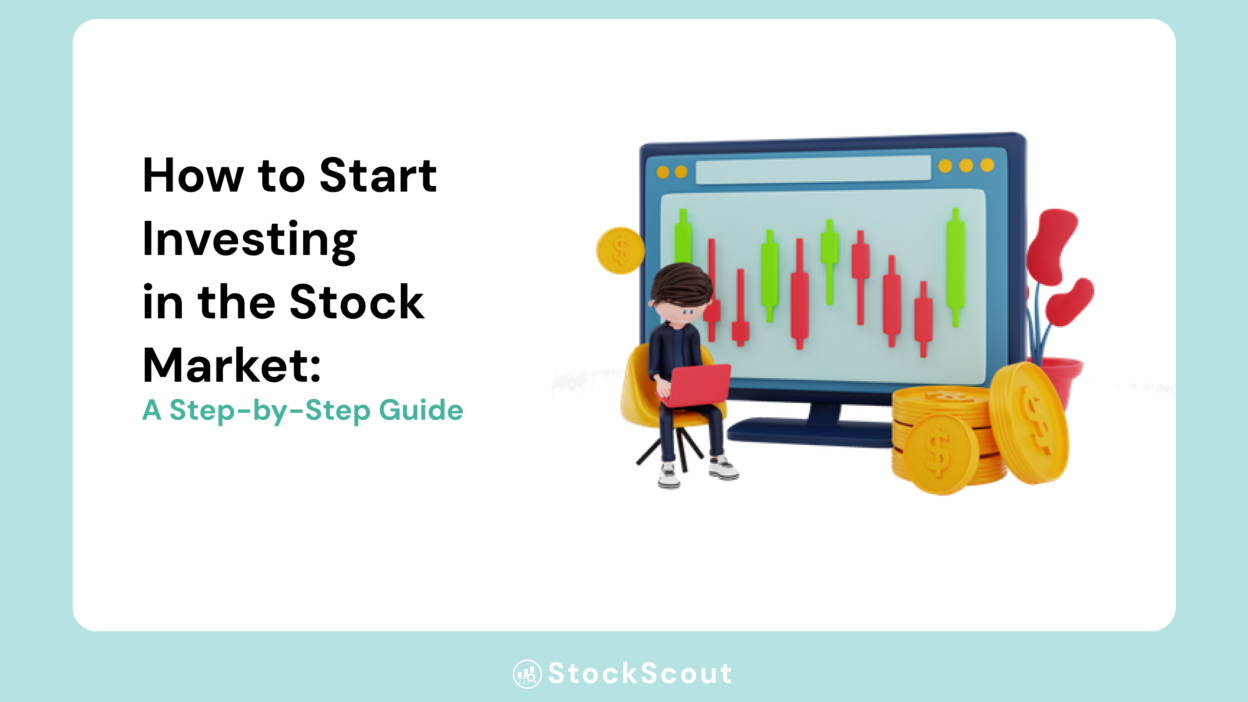Investing in the stock market is one of the most effective ways to grow your wealth over time. Whether you want to save for retirement, build an emergency fund, or achieve financial independence, learning how to invest in stocks is a crucial skill. This beginner-friendly guide will walk you through everything you need to know how to start investing in the stock market.
Understanding the Basics
What Is the Stock Market?
The stock market is a marketplace where individuals and institutions can buy and sell shares of publicly traded companies. Each share represents a small ownership stake in a company, and as the company grows, so does the value of your investment.
How Does It Work?
Companies list their shares on stock exchanges like the New York Stock Exchange (NYSE) or Nasdaq. Investors trade these shares, and their prices fluctuate based on supply and demand, company performance, and economic factors.
Benefits and Risks of Stock Investing
Benefits:
- Potential for High Returns: Historically, the stock market has provided an average annual return of 7-10% over the long term.
- Liquidity: Stocks are easily bought and sold.
- Passive Income: Some stocks pay dividends, providing a steady income stream.
Risks:
- Volatility: Stock prices can fluctuate significantly in the short term.
- Market Risk: Economic downturns can negatively impact investments.
- Loss of Capital: There’s always a chance of losing your investment.
Preparing to Invest
Set Financial Goals
Before investing, determine why you’re investing and what you want to achieve. Are you saving for retirement, buying a home, or building an emergency fund? Clear goals will help guide your investment strategy.
Understand Your Risk Tolerance
Risk tolerance refers to your ability to handle the ups and downs of the market. Younger investors may take on more risk for higher potential returns, while older investors may prefer safer options.
Build an Emergency Fund
Investing always involves some level of risk. Make sure you have 3-6 months’ worth of living expenses saved in a liquid emergency fund before putting money into the stock market.
Learn About Investment Options
- Stocks: Ownership in individual companies.
- ETFs (Exchange-Traded Funds): Funds that track an index, such as the S&P 500.
- Mutual Funds: Pooled investments managed by professionals.
- Bonds: Debt instruments offering fixed returns.
How to Get Started
Choose a Brokerage Account
To invest in the stock market, you’ll need a brokerage account. Popular platforms include:
- Robinhood: User-friendly for beginners (US).
- Fidelity: Offers comprehensive tools and research (US).
- eToro: Allows social trading and copying experienced investors (US).
- Sarwa: Similar to Robinhood, but for the UAE residents.
Compare fees, minimum deposit requirements, and features before selecting a platform.
Research and Select Your First Stocks
Start by researching well-established companies with a strong track record, often referred to as “blue-chip stocks.” Consider industries you understand and diversify across sectors to reduce risk.
Understand the Importance of Diversification
Diversification involves spreading your investments across different asset classes and sectors to minimize risk. For beginners, low-cost index funds or ETFs are excellent choices for instant diversification.
Start Small with Dollar-Cost Averaging
Instead of investing a lump sum, practice dollar-cost averaging by investing a fixed amount regularly. This strategy reduces the impact of market volatility.
Tips for Long-Term Success
Avoid Emotional Investing
Stock prices fluctuate, but reacting impulsively to short-term changes can lead to losses. Stick to your investment plan and think long-term.
Continuously Educate Yourself
Stay informed by reading books like The Intelligent Investor by Benjamin Graham or following reputable financial blogs and podcasts. Knowledge is your most valuable asset.
Monitor Your Portfolio (But Not Too Often)
Regularly review your portfolio to ensure it aligns with your goals. However, avoid obsessing over daily market movements, which can lead to unnecessary stress.
Common Mistakes to Avoid
Timing the Market
Trying to predict market highs and lows is nearly impossible and can lead to missed opportunities. Focus on consistent, long-term investing.
Over-trading
Frequent buying and selling can rack up fees and reduce returns. Adopt a buy-and-hold strategy for better outcomes.
Ignoring Fees
Brokerage fees, fund management costs, and other charges can eat into your profits. Opt for low-cost platforms and investment products.
